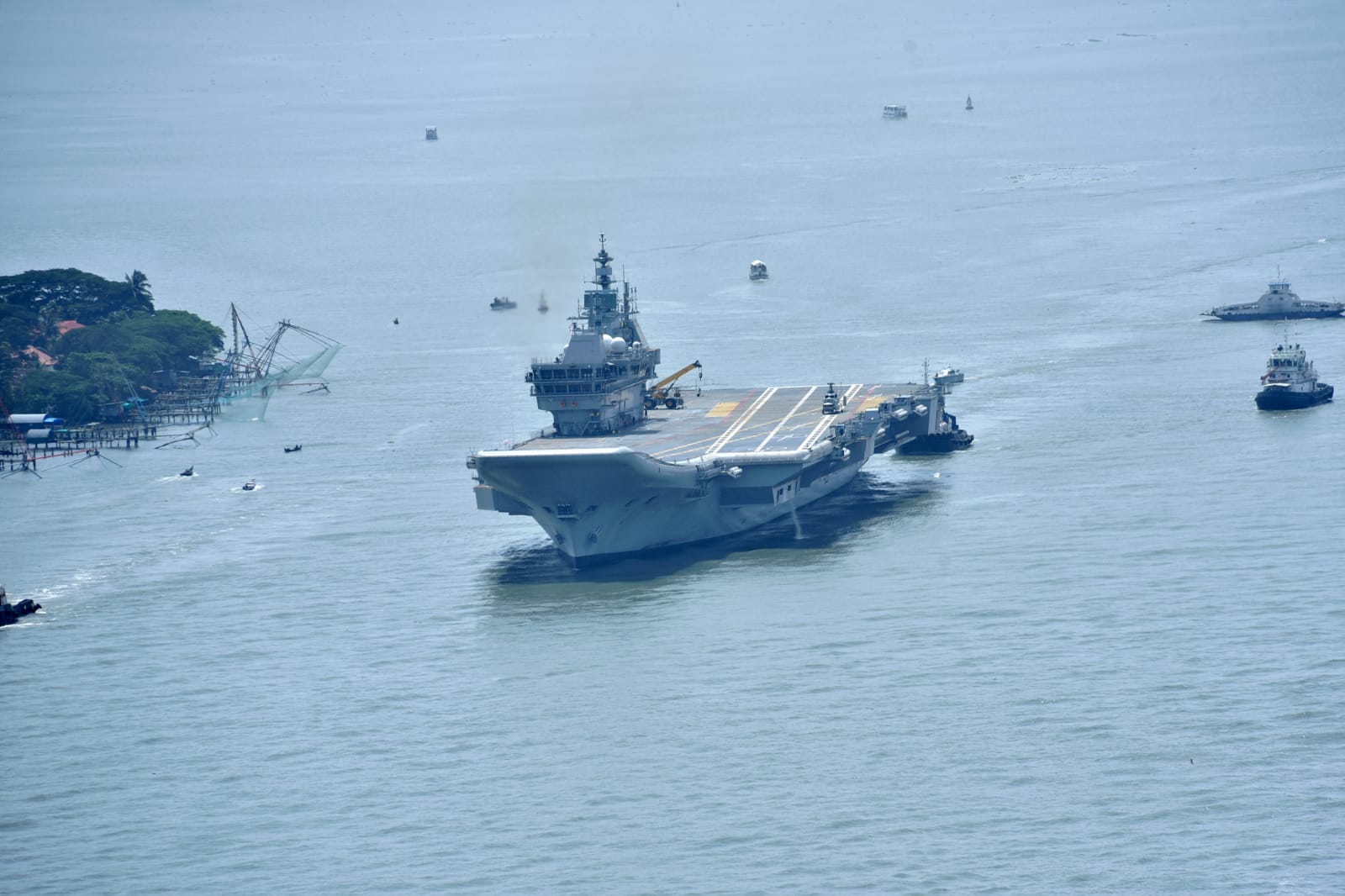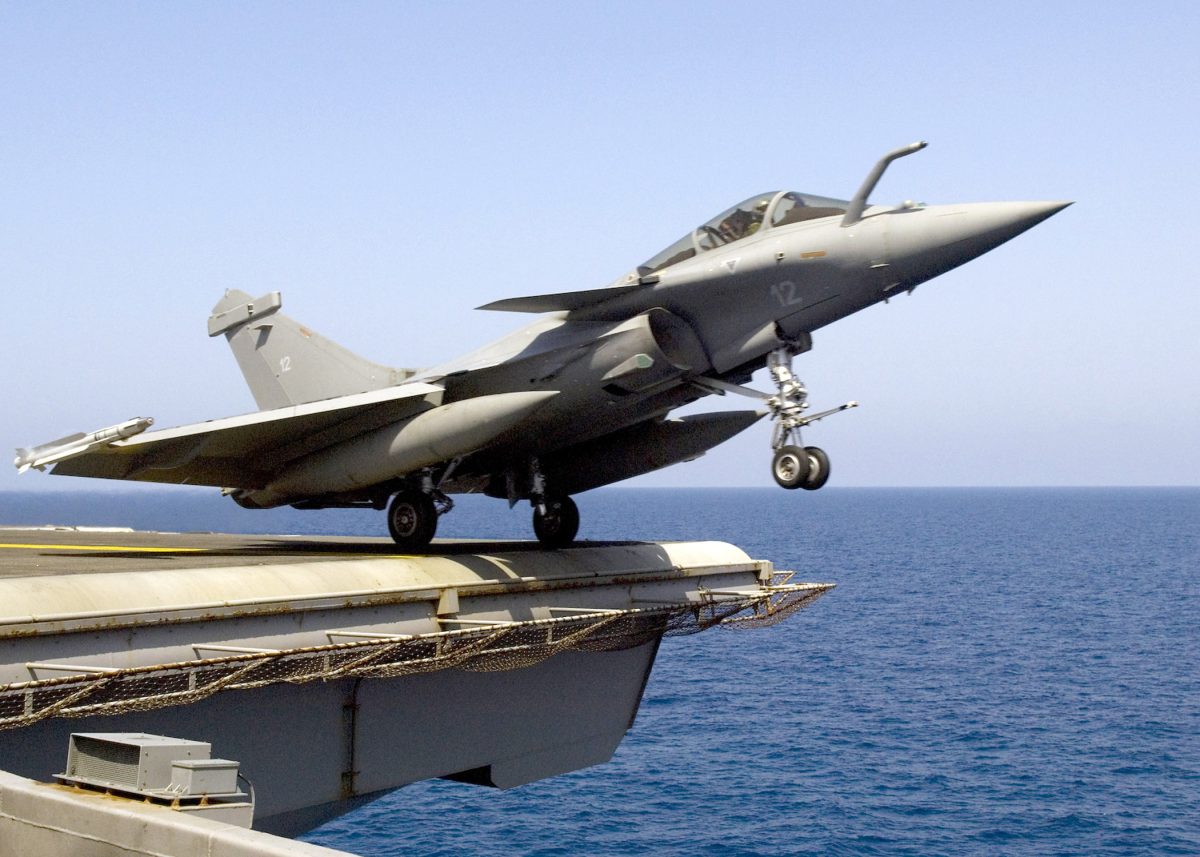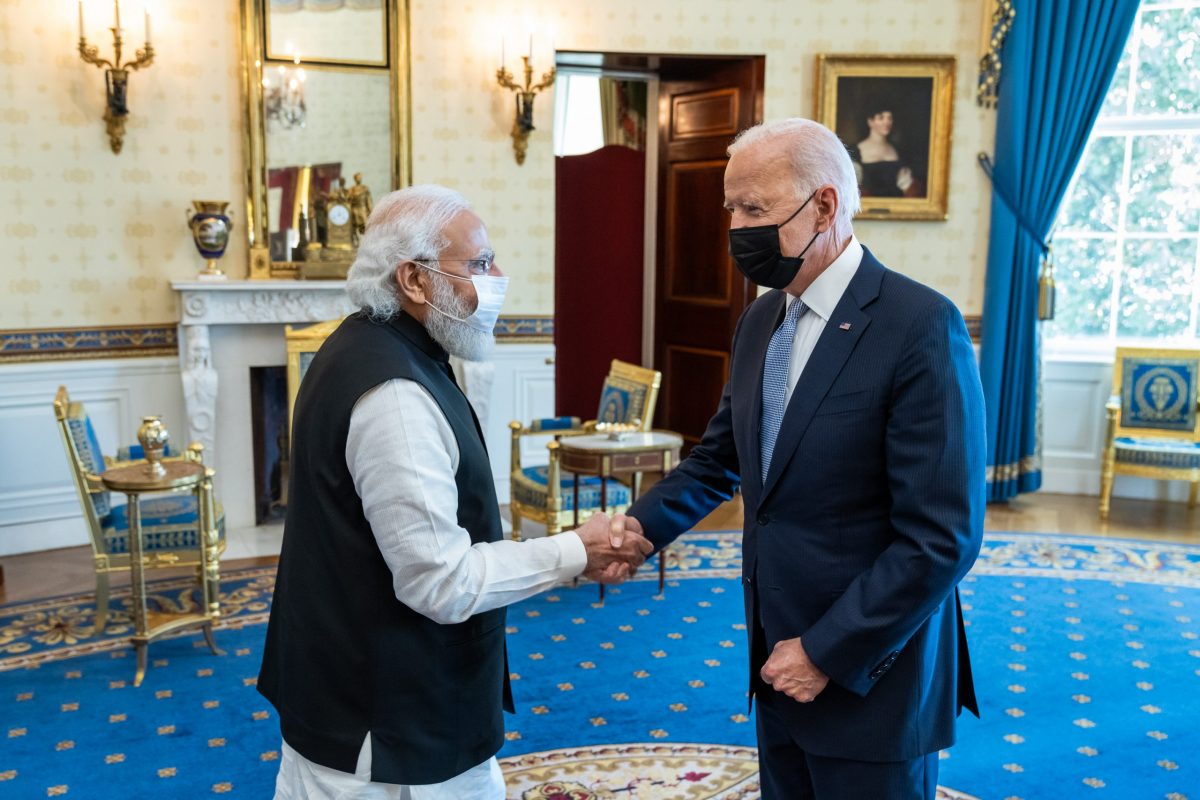The US House of Representatives passed a legislative amendment on July 14, approving a waiver to India against the punitive CAATSA sanctions for purchasing the S-400 air defense system from Russia. Could this waiver have any bearing on India’s carrier-borne fighter program for which the American F-18 Super Hornet is competing against French Rafale-Marine?
CAATSA (Countering America’s Adversaries Through Sanctions Act) is a US law that forbids American companies from engaging in any business with sanctioned countries.
It was adopted in 2018 in response to Russia’s involvement in conflicts in Ukraine and Syria and its alleged meddling in the 2016 US Presidential elections. However, the law is equally valid against Iran and North Korea as well.
The legislative amendment passed on July 14 was authored by Indian-American Congressman Ro Khanna, urging the Biden administration to provide India with a CAATSA waiver to counter the increasing threat from China.
As previously discussed by EurAsian Times, one of the reasons behind the US’ willingness to overlook the Indian purchase of the S-400 is the negative fallout of sanctions against India on the US arms manufacturers.
In the last two decades, US defense sales to India have reached up to $20 billion and American defense giants such as Lockheed and Boeing have also begun joint ventures for arms production with major Indian companies like Tata and Mahindra.
Moreover, India is currently in the middle of an important decision to acquire carrier-borne fighter jets for its newly developed aircraft carrier, INS Vikrant, and the Boeing F/A-18 Super Hornet is one of two shortlisted contenders
The Indian Navy wants to acquire a twin-engine aircraft to replace the existing MiG-29Ks from INS Vikramaditya. It will enter into a government-to-government contract with the US or French government to purchase over two dozen fighter aircraft.
Earlier this month, Vice Chief Admiral SN Ghormade of the Indian Navy had said that trials of the Super Hornet and Rafale-M had been done to know their capability for aircraft carrier operations.

Rafale-M and F-18s carried out ski-jumps – a crucial take-off capability — from the shore-based test facility at INS Hansa in Goa to demonstrate their ability to operate from Indian aircraft carriers.
The Navy is now awaiting a final report on the operational demonstration, which according to reports in the defense and security establishment, would take two months to prepare.
While both the aircraft are promising platforms, there are various other factors that could come into play as India arrives at its final decision. One such factor possibly could be the CAATSA waiver for India.
Reports Of Technical Issues With Rafale-M
Also, recent reports suggest some technical issues with the Rafale-M that may tip the scales in favor of the F-18 Super Hornet.
Firstly, the Rafale-M cannot fold its wings, making it take up more space on the hangar deck. The weapons and tip rails of the aircraft have to be removed for it to fit into the Elevator, which will carry it to the maintenance bay below.

Whereas the Super Hornet has a folding wing mechanism, Boeing has confirmed in its official presentation to the Indian Navy that the aircraft can fit into the Lift of the INS Vikrant and INS Vikramaditya without needing removal of the radome cone and wingtip rails.
Also, F-18’s single-seater and twin-seater variants can operate from the aircraft carrier, unlike the Rafale-M, whose twin-seater variant works from the shore, which Boeing argues, may benefit the Super Hornet.
Furthermore, Rafale-M has a limited production of fewer than 50 units, as the only operator of this aircraft is the French Navy, which is said to make this platform more expensive than the Rafale jet operated by the French Air Force and Super Hornets.
While in the case of the F-18, nearly 1,500 legacy and present generation examples were produced over the last four decades, which should reduce certain operating costs because of economies of scale.

Boeing officials also highlight the interoperability factor, saying the Super Hornet is compatible with other systems and platforms in the Indian Navy’s service, like the MH-60 Romeo anti-submarine helicopters and P-8I Poseidon long-range maritime aircraft.
Another factor that may benefit the F-18 is its General Electric (GE) F414 engines, the same engine chosen by India to power its carrier-based fighter, the Twin Engine Deck Based Fighter (TEDBF).
With these engines, the maintenance crew will not have to carry separate spare parts for two different engines when both aircraft types are on the same aircraft carrier. It will also save additional costs in training the maintenance crew to service two different types of engines.
However, Safran, the manufacturer of the M-88 engine that powers the Rafale, has recently announced to set up a $150 million Maintenance Repair Overhaul (MRO) facility in India, as per a recent Eurasian Times report.
The MRO facility is expected to service the CFM engines of the Airbus A320s and Boeing 737s produced by CFM Engineering, a joint venture between Safran and General Electric. It is unclear, though, whether the M-88 engine of the Rafale will be serviced in this facility.
Furthermore, Safran is also close to signing a deal with the Defence Research Development Organization (DRDO) to develop a 125 KN engine for its indigenous fifth-generation fighter program, the Advanced Medium Combat Aircraft (AMCA).
Geopolitics Surrounding The Deal
There is also a diplomatic and geopolitical aspect to India’s decision, as France has been India’s time-tested partner in advanced defense technology. In contrast, the US has historically been reluctant to share cutting edge technologies with India.
Also, New Delhi has always valued its strategic autonomy in the international geopolitical landscape, which is evident from its stance on the current Ukraine crisis, where India refused to deplore Russia for invading Ukraine despite the pressure from the US and other Western countries.

Considering the recent Western sanctions regime against Russia due to the Ukraine war, mainly spearheaded by the US, India may doubt Washington’s reliability as a defense partner. Therefore New Delhi could be more inclined toward a deal with France.
However, the latest historic amendment by the US lawmakers for CAATSA sanctions waiver to India could perhaps address some of New Delhi’s doubts and maybe even secure the deal for Boeing F-18.
The EurAsian Times asked three experts whether CAATSA waiver by the US on India’s purchase of Russian-made S-400 will have any bearing on India’s choice between the Super Hornet and Rafale-M.
According to IAF fighter pilot Squadron Leader Vijainder Thakur, “Imposition of CAATSA sanctions would have definitely ruled out the selection of the Super Hornet! The Super Hornet likely has a significant cost advantage over the Rafale-M, so a better way of looking at it would be that the US has removed a possible hurdle in its selection.”
When asked whether India could decide to reciprocate the US’ waiver of CAATSA sanctions by choosing Super Hornet, Thakur said, “a quid-pro-quo favoring of the Super Hornet by India would be unethical, and France would surely protest.
Prakash Nanda, a veteran journalist and a strategic affairs commentator, said he does not believe the waiver is linked to the deal. “The choice of aircraft depends on the terms and conditions they will be procured. The waiver is to be seen in broad geopolitical terms,” said Nanda.
Another aviation expert who requested anonymity said – “the CAATSA waiver for India could not be particularly targeted at tipping the scales in favor of the F/A-18 Super Hornet but can be placed in an overall geopolitical context.”
“The US was taken aback over India’s independent stance on Russia, which evolved into a slight crack in the India-US relationship itself. India’s oil purchase from Russia burgeoned, while it also refuses to criticize for its military intervention in Ukraine.”
According to the expert, the US seems to have given up trying to pull India away from Russia, but New Delhi has another important utility for Washington, which is countering China.
I believe both the fighters Rafale-M and F-18 Super Hornets are great warplanes and would be a tremendous addition to the Indian Navy. Both fighters have demonstrated their capability to operate from the Indian aircraft carrier, and both of them are powerful, battle-tested platforms.
Now it’s a political decision and finally boils down to ‘value additions’ that the US and France can offer to India. Keeping both the powerful camps happy, it could very well be Super Hornets for the Indian Navy and Rafale fighters for Indian Air Force, the expert concluded.
- Contact the author at tanmaykadam700@gmail.com
- Follow EurAsian Times on Google News




